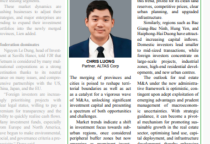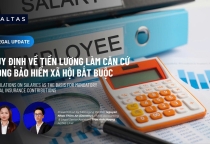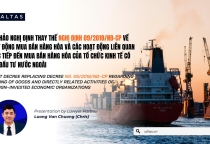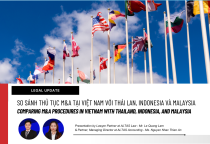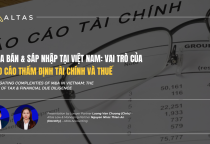STEP-BY-STEP GUIDE TO CONDUCTING FINANCIAL & TAX DUE DILIGENCE IN VIETNAM
Views: 650
(11).png)
Introduction
In every M&A (Mergers and Acquisitions) transaction—especially for foreign investors entering emerging markets like Vietnam—conducting Financial & Tax Due Diligence is a mandatory step to identify risks, determine the actual value, and ensure transparency for the transaction.
In Vietnam, this process requires a deep understanding of the Vietnamese Accounting Standards (VAS), a legal framework that is still evolving, and varying levels of transparency among enterprises. Therefore, designing a thorough, systematic, and locally adapted due diligence process is a key factor for ensuring deal success.
I. Scope Definition
The first step is to clearly define the scope of the due diligence. Depending on the investment objectives and acceptable risk levels, the due diligence process can be divided into:
-
Full-scope due diligence: Covers all financial and tax aspects.
-
Limited-scope due diligence: Focuses on key areas such as:
-
Revenue & Expenses
-
Liabilities & Loans
-
Fixed Assets
-
Tax Compliance
-
Related-party Transactions
Important: Distinguish between Financial Due Diligence—which assesses operational performance and risks—and Tax Due Diligence—which verifies legal compliance and tax obligations.
II. Data Collection and Categorization
An effective due diligence process starts with the request and preparation of complete data. Key documents to collect include:
-
Audited financial statements for the past 3–5 years
-
Corporate Income Tax (CIT), VAT, and Personal Income Tax (PIT) declarations and settlement reports
-
Accounting ledgers, general journals, balance sheets
-
Major business contracts, sales invoices, payment documents
-
Fixed asset lists, depreciation schedules
-
Payroll, labor records, social insurance documentation
-
Bank reports and account statements
Note: Data should be digitized and systematically categorized from the beginning to support fast and accurate analysis.
III. Financial Data Analysis
At this stage, financial experts conduct in-depth analyses such as:
-
Comparing accounting profits with actual cash flow – to identify non-cash revenue/expenses
-
Checking the stability and consistency of financial indicators over the years
-
Deep-dive analysis into:
-
Receivables & Payables: Aging, recoverability, major customer risks
-
Inventory: Existence, marketability, discrepancies between book and actual stock
-
Loans: Structure, repayment terms, interest rates, payment capability
-
Fixed Assets & Depreciation: Remaining value, unrecorded wear and tear
IV. Tax Compliance Assessment
This part often contains major risks, especially if the target company lacks transparency or has "optimized" taxes improperly. Key steps include:
-
Reviewing CIT, VAT, and PIT finalization reports for recent years
-
Inspecting disallowed expenses: non-business expenses, over-limit costs
-
Reconciling tax payments with declared records
-
Analyzing related-party transactions and signs of transfer pricing
-
Checking compliance with fund allocations and provision setup regulations
Special Note: Some tax risks only become evident when cross-checking accounting data, contracts, cash flows, and legal documents.
V. Cross-Check with Legal Documents & Hidden Risks
A critical step is verifying consistency across:
-
Accounting records – Bank statements – Commercial contracts – Business licenses – Internal documents
Identify potential risks such as:
-
Contracts lacking legal enforceability
-
Transactions without invoices, off-the-book payments
-
Ongoing internal disputes or lawsuits
-
Issues related to asset ownership
Goal: Detect early “red flags” that could significantly affect the investment decision.
VI. Final Report & Recommendations
After the due diligence process, experts will provide a report including:
-
Summary of key findings, including major risks and specific financial impacts
-
Identified “red flags” and their effect on business valuation
-
Recommended adjustments:
-
Purchase Price Adjustments – if findings affect the initial valuation
-
Escrow or Retention Mechanisms – to protect investors from unresolved risks
VII. Conclusion
A well-executed financial and tax due diligence is not just a bookkeeping review, but a magnifying glass that helps investors see the true picture of the target business. This enables better decision-making on pricing, protection mechanisms, and post-M&A preparations.
In the Vietnamese market, where many businesses lack standardized governance and compliance, the role of due diligence is even more critical. Understanding each step and applying the correct methodology is vital for long-term, sustainable investment success.
VIII. HOW ALTAS CAN SUPPORT
ALTAS LAW provides comprehensive legal, accounting, and tax services tailored to support a smooth transition during this phase:
-
Accounting & Tax Services: We offer accounting and tax services to help your business manage the financial impacts of these reforms, including tax planning, reporting, and compliance.
-
Licensing & Regulatory Compliance: We thoroughly review your existing licenses, advise on necessary amendments or renewals, and guide you through the process of obtaining any new approvals. Our team also ensures your compliance with all relevant regulatory changes.
Please contact us at contact@altas.vn to discuss how we can support you in navigating these reforms successfully.
---
Prepared by:
Lawyer Partner at ALTAS Law - Mr. Le Quang Lam & Managing Director at ALTAS Accounting - Ms. Nguyen Nhac Thien An
Date: August 08, 2025
Copyright © 2025 ALTAS LAW. All Rights Reserved.
Ownership: This document and its contents (the "Materials") are proprietary assets solely owned by ALTAS LAW (including ALTAS LAW, ALTAS CORP, and its affiliates). Use of these Materials does not establish any contractual or attorney-client relationship between ALTAS LAW and any other party.Disclaimer: All Materials are provided for informational purposes only and may not reflect the most current legal developments. Summaries of laws, regulations, and practices may change. These Materials are not intended to serve as legal or professional advice for any specific matter and do not replace compliance with applicable laws, rules, or regulations. Clients are advised to seek legal consultation before taking or refraining from any action based on this information. ALTAS LAW and its editors/authors do not guarantee the accuracy of these Materials and disclaim any responsibility for actions taken based on any part of them.External Links: These Materials may contain links to external websites, or vice versa. ALTAS LAW is not responsible for the content or operations of any such external websites and disclaims all related liability.Note: Past outcomes do not guarantee similar future results, as each case is unique.











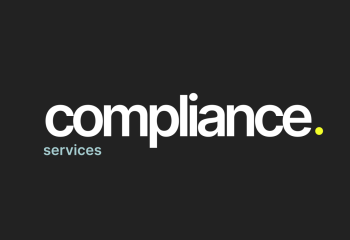


(11).png)
